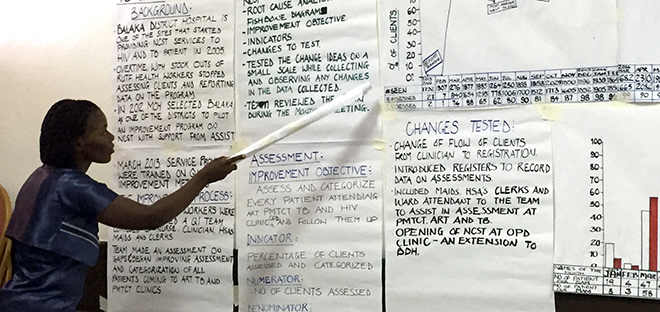
What began in Malawi in 2012 as an effort by the Ministry of Health (MOH), with FANTA and other partners, to use quality improvement (QI) methods to improve its nutrition care, support, and treatment program has greatly expanded. QI has been used to help health facility teams integrate nutrition with HIV and tuberculosis care and treatment services. Starting 2016, the MOH began working with FANTA to apply QI methods to community-based management of acute malnutrition (CMAM). They had an ambitious goal: To reduce SAM mortality rate among children to less than 5 percent.
The MOH is using a four-step QI model, called “model for improvement,” as the basis for the country’s approach to nutrition services:
- Identify the improvement aim/objective;
- Develop the improvement measurement system;
- Generate ideas for changes; and
- Test/implement system changes.
This approach is described in the Malawi Nutrition Quality Improvement Brief #1. Brief #2 describes how FANTA and MOH applied the QI model for improvement to facilitate the effort to improve the care of children with SAM in seven hospitals in the southeast zone of Malawi.


